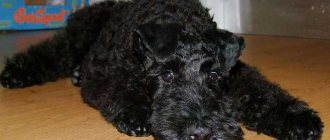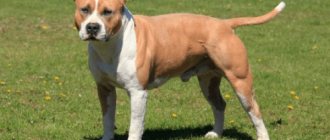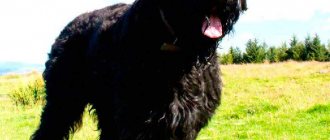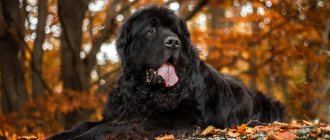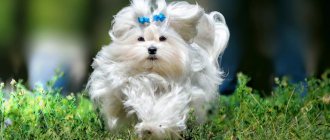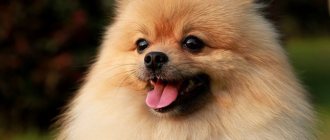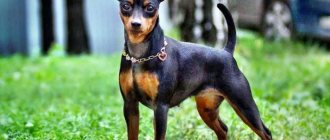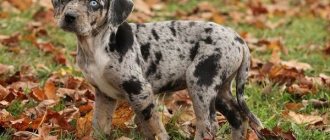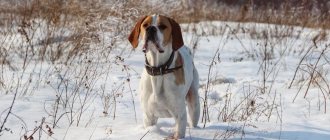Norwich Terriers are the smallest among the variety of hunting breeds. Despite their decorative appearance, they are formidable hunters with a special temperament. Energetic, intelligent, cheerful and friendly dogs seem ideal for apartment living or for a child's first pet. Is it so? Let's look at all the features in this article.
History of the origin of the breed
Norwich dogs were developed in the mid-19th century. The homeland of dogs is the city of Norfolk, and the man who contributed to the appearance of such charming dogs was a hunter seeking to breed a breed capable of hunting and accompanying its owner in unusual conditions in the East of England.
The English county of Norfolk has long been famous for its forests rich in game. The best of each breed of dog was brought to the county from all over Foggy Albion. Therefore, it is not surprising that it was there that a whole “galaxy” of hunting terriers appeared, including the Norwich Terrier, an excellent catcher of small game like rabbits and badgers, who, in addition to his immediate duties, also guarded the owners’ barns from rats.
It is most likely that representatives of the breed were formed by the middle of the 19th century, but it was registered only in 1932. For a long time, two varieties existed in parallel in the breed - with hanging and erect ears, but soon it was decided to separate them. This is how a new breed appeared, named after the county - the Norfolk Terrier, whose peculiarity is the drooping corners of the ears.
For a long time, breeders could not decide on a name for the second variety of the breed, since in different places these dogs were called differently. So, in their homeland, in the city of Norwich, they were called “rethunters” - rat hunters or “regs” - shaggy ones. This name was obtained due to the tousled fur, especially on the face.
The terrier was especially loved among Cambridge students, who considered it their mascot and wanted to give the breed the name of the university. Nevertheless, it was decided to give the breed a name in honor of its hometown and the capital of the county - Norwich.
The Norwich has a visual resemblance to the Yorkshire Terrier, but there is an explanation for this. The ancestor of the Norwich is the black and tan English terrier, which was bred by breeders by crossing a Yorkie and an Irish terrier.
Description of the breed
According to general ideas about the breed, one can see the features of a typical hunting dog - a small dog with a strong bone skeleton and a moderately wide chest. The type is squat, the body is as massive as possible, which contributes to endurance. By temperament, dogs have a little unpredictability.
According to the standard, Norwich dogs have a distinct characteristic - they do not fool around, but with increased activity, endurance, determination and tirelessness. This breed is one of the smallest representatives of its class, as evidenced by their weight, not exceeding 5.3 kg, and height of 27 cm.
The head is only visually large due to the large accumulation of hair on the muzzle. The shape of the skull is typical for the terrier class: a spacious cranium, rounded towards the top, the frontal part is flat, sharply transitions to the nose, where the muzzle narrows. The muzzle is a third shorter than the skull, but this does not weaken it. The lip is pigmented, thin, and fits tightly to the second.
The teeth are large and appear less proportional when looking at their overall appearance. The incisors are of ideal even shape, the fangs are tightly compressed. A dog with the correct bite, no gaps.
The nose is one of the most sensitive parts of the body. It is black in color, but may have flesh spots and is mobile.
The eyes are of medium width, slightly recessed into the orbital area, which serves as protection for the dog. Eyes with an oval cut, brown color. The eyelids fit tightly to each other. Thanks to its expressive look, the dog seems like an eternal puppy who is interested in everything.
The ears are medium, stand up all the time, have the shape of a triangle, but due to the large amount of hair it seems that the ears are too small. When the dog is concentrated, the ears are tense and move slightly forward; when the animal is calm, they move back.
Strong rectangular body . The neck is short due to its thickness, but this guarantees stability. The scruff or dewlap is not pronounced. The chest is of medium width so as not to interfere with movement. Springy ribs with a noticeable stretch back. The shoulder part is well developed with a sloping croup.
The front legs have less pronounced muscles. The limbs are short, but smooth and thick. Shoulders pulled back, elbows toward sternum with wrists toward the ground. The thighs are of moderate length, but they are quite strong. The stifle and metatarsal joints are at a natural angle, which makes the dog more powerful. The paw pads are strong, as the dog is an excellent digger and also runs quickly.
The tail is short, but thick, adjacent to the dorsal line. It can be natural or cropped. The tail itself is naturally powerful, without rounding, but slight irregularities are acceptable. After docking, it has a straight type that continues the dorsal line.
Buying "from hand"
The advantage of this method of purchasing an animal is that it costs relatively little. At the market there are resellers called “breeders”; some sellers bring dogs whose breed and health they know nothing about. Although the price tags are lower than in dog breeding organizations, there is a risk of loss in purchasing a non-purebred or sick animal, which can be adopted for free.
To avoid becoming a victim of deception, you need to have a good understanding of the exterior of purebred animals and be able to visually recognize signs of disease. Try to find out the seller's address so you can contact him if any misunderstandings arise.
Colors
The Norwich Terrier has the classic color for terriers. The structure of the fur is hard, wiry, bristling in all directions. The guard hairs lengthen toward the neck area, giving the appearance of a collar. The hair on the face is shorter. Located and clearly visible on the chin and eyebrow area. The undercoat is obligatory and developed.
The following colors are allowed:
- red – bright red, fawn;
- black and red color;
- pinky – creamy red, with a pinkish tint;
- wheat;
- black – the color on the back is darker than on the whole body, reminiscent of a saddle;
- grizzly - an equal combination of red and black;
- tan – black with tan markings on the face, paws, and chest.
The main feature is the absence of white color. No inclusions of this color are allowed by the standard.
Character and behavioral characteristics
Norwiches are smart and proud dogs who love their owners passionately. Excellent companions, they are friendly and active. They differ from many breeds in their calm attitude towards loneliness - they do not whine or “cry” in the absence of people, and do not damage furniture and shoes. They are easy to train and love agility and other dog activities.
A hunting dog has the habits and habits of the breed. Norwich are susceptible to the influence of natural instincts, which is manifested in the following features:
- They cannot walk without a leash. One of those breeds that requires special training, since their tendency to search and pursue prey does not allow them to be allowed to go for independent walks;
- Dangerous neighbors. Representatives of this breed, in principle, do not get along well with other pets: Norwich dogs are aggressive towards rodents and cats, as they were bred specifically for hunting animals of this size;
- Impatient with children's aggression. Many owners talk about how their pets steadfastly endure the mischief of children who pull their dogs’ noses and tails. The terrier cannot be called a fan of such games, and he can fight back. The child must immediately be explained that the terrier is not a toy.
Choice at the nursery
Before going to the nursery, look at the reviews about it, and independently study the information about the breed you are interested in.
Ask about the health of the puppy and its parents. There are various diseases that are inherited, and there are breed-specific predispositions to certain pathologies. Make sure that the dog is in good health, examine the ears, eyes, fur, and feel the belly. Ask about vaccinations and parasite prevention. A professional breeder will readily provide the necessary information, recommend a good veterinarian, and give a list of suitable dog care products.
Pay attention to the dog's behavior; he may show distrust, but there should be no aggression or fear. A healthy dog shows interest in toys and actively plays with his brothers and sisters. It is recommended to pick up puppies after they are 8 weeks old; during this period they are not very dependent on their mother and are able to adapt to a new environment.
Ask the breeder to show the parent dogs; if he refuses, then there are probably some problems with their health or behavior. The parents of the baby dog must be mentally balanced, without signs of physical illness. Character is inherited, if you don’t like the behavior of adults, then don’t rush to buy.
Kennels provide the buyer with accompanying documents:
- contract of sale;
- acceptance certificate;
- veterinary passport;
- metric.
Please submit for review:
- organization registration document;
- act of mating;
- parents' pedigrees;
- certificates, diplomas, exhibition photographs, etc.
The amount of documentation in dog breeding institutions varies.
Professional sellers willingly provide information without leading questions, are interested in the future fate of their charges, ask for a telephone number for contact, give recommendations on care, feeding, education, assist in planning exhibition events, breed matings, and provide possible discounts on services and dog accessories.
Education and training
Training is practically no different from that which is carried out with other representatives of terriers. Some breeders are practically unable to cope with the character of the Norwich, so they resort to the help of dog handlers. Difficulties begin at the first stage of basic training. Carried away by the area, the Norwich Terrier may ignore the owner’s commands, as he is often lost or completely lacks attention.
Even in old age, activity and endurance are maintained, the dog remains energetic, with increased mobility. To keep fit, it is recommended to exercise your dog regularly.
- The recommended duration of training is no more than an hour, regularity is once every two to three days.
- The Norwich Terrier loves to play. Therefore, for a walk you need to take a tug-of-war rope and other toys of this type. There is no effect from the dog playing in the apartment. Therefore, the owner must provide the pet with activity.
- There is no need to be surprised that during the game the dog can play too much and become aggressive. They love to remain the winner in any competition.
- Physical punishment is the worst way to get what you need to know.
- If the dog needs to be punished for bad behavior, the owner must use the tactic of ignoring - immediately after the offense, reprimand the animal in a stern voice and not notice it for several hours.
- The best method is encouragement.
Each animal is individual. Dogs have different personalities, and how you train an animal at the age of a puppy is how it will behave in the future.
Terriers are not dogs for street keeping; cold and constant loneliness will have a bad effect on health and behavior. The terrier can be kept both in the house and in the apartment, since it does not shed, its coat is odorless, it tends to be clean, it is calm, and with proper training it never damages furniture. Unlike many small breeds, the Norwich Terrier is not capricious and does not require constant attention.
Norwich Terrier personality
Miniature dogs have earned the love of breeders due to their cute appearance and good-natured, reserved and fearless character. These animals are always ready to stand up for their owners and themselves.
Norwich are sociable pets that require increased attention, care and love, which is why they need the presence of members of the household. They quickly get used to the rules of living, get along easily with other pets, but do not tolerate loneliness well. The dog will definitely burst into a protracted howl - the displeasure of the neighbors will be ensured.
Norwich feels the “weather” in the house; in a tense moment, he is able to defuse the atmosphere with an unusual acrobatic stunt or a funny prank. The respect of the Norwich will not be easy to win for people with a soft-hearted character - the hunting breed is suitable for breeders who can easily become a leader in an improvised “pack”.
As for the protective qualities of Norwich Terriers, many dog breeders agree that they are absent. Despite the developed hunting instinct - vigilance, little rat catchers have a good-natured and cheerful disposition, so they are quicker to wag their tails than to rush into a swift attack. Do not rely on the protection of property - dogs are ready to ignore the appearance of a stranger on the premises in response to a tasty treat or kind words.
Training by an experienced dog handler will improve the situation, but you should not rely on the pet’s excellent protective qualities. Therefore, if you are looking for a dog to guard your house or apartment, it is better to get a different breed.
The activity, energy, and playful attitude of Norwich dogs is the main reason why small dogs feel comfortable in families with small children. And the older the baby, the better - the four-legged friend will not tolerate disrespect: he will not bite, but he will also refuse to play further.
The friendly nature of Norwich Terriers allows you to bring other pets into your home. Dogs get along well with small four-legged animals, but cats are tolerated only if there is no reason for jealousy.
There is no need to place birds and small rodents next to Norwich cats - natural instinct will definitely work, and even the owner’s loud, strict commands will not help in this case. Punishment or complete isolation will not improve the situation - the pet will definitely launch a real hunt for a hamster, parrot or rat, which will end in success.
Important! The Norwich Terrier often exaggerates its own importance, which causes clashes with larger dogs. If training by a professional does not give the desired results, an extreme measure will be required - castration (relevant for males who are not planned to be used in breeding\breed).
Terriers are characterized by excessive mobility. They require regular and long walks outside with increased physical activity, which will keep furniture and household items intact. Keep your four-legged friend busy chasing a ball, overcoming an obstacle course, or searching for hidden things and objects. During the game, the Norwich Terrier will throw out all the excess energy and leave you alone until the next walk.
Diseases
The breed was bred for hunting, so the Norwich Terrier at puppy age is quite hardy and rarely susceptible to disease. But the most common diseases in these dogs are:
- epileptic syndromes;
- tracheal collapse;
- brachycephalic disease (soft palate lengthens);
- allergy to certain cereals.
- pancreatitis;
A dog may have rabies, plague, or infectious hepatitis. But only timely vaccination can save you from this.
The average life expectancy of terriers is twelve to sixteen years.
Terrier puppies are born with large heads, so females need veterinary care.
Many terriers have problems with the spine; the best prevention is proper nutrition and exercise.
Advantages and disadvantages
- Pros:
- good health;
- flexible and peaceful disposition;
- unpretentiousness in daily care;
- developed intelligence, understanding;
- good adaptation to new living conditions.
- Minuses:
- rare and expensive breed;
- feeding with high-quality premium food;
- the need for education and training at an early age;
- excessive activity, the need for long walks with increased physical activity;
- love of dirt, garbage, digging in the earth, swimming in a puddle.
Care
Norwich Terrier dogs do not require complex care. The coat is combed once a week. Like many wire-haired breeds, they do not shed seasonally, that is, old dead hairs do not fall off, but remain in place in the form of a dense “shell.”
Haircut, trimming and bathing
Grooming, trimming or plucking dead hairs on your dog will help keep the coat clean and well-groomed. Thanks to this procedure, the room is cleared of animal hair. Trimming prevents blocking of skin pores, which occurs when new hair grows, but existing hair that has died is in the way. With careful plucking, the quality of the animal's fur is preserved.
The procedure must be carried out at least a couple of times a year; for this, you can contact professional groomers or carry out the procedure yourself. This requires special knowledge, since inexperienced work can ruin the appearance of the animal.
Theoretically, there is nothing complicated, but you need to understand which hairs should be plucked. Therefore, it is recommended to carry out the first procedure of plucking dog hair with a knowledgeable person. This will get rid of troubles for the dog.
Due to its size, the Norwich Terrier does not get very dirty at home, and its coat does not get tangled, which allows it to be washed whenever it gets dirty.
Bathing should not be done frequently; it is advisable to wash it whenever it gets dirty. Dogs need weekly eye and ear examinations and cleanings.
It is unacceptable to use shampoos not intended for dogs. This can negatively affect the quality of the wool.
After walks, it is necessary to check for ticks, and also periodically treat the animal for helminths.
Feeding
The Norwich Terrier loves to eat a lot, so no matter how much he puts on his plate, he will eat it all. Owners should control portions for their pet.
The diet is selected to be balanced with all the main components: proteins, fats, carbohydrates. The obligatory presence of buckwheat, rice, fermented milk products, dietary meat, eggs, cottage cheese, cereals, vegetables and some fruits.
You can add vitamin supplements as complementary foods, which your veterinarian will recommend. It is strictly contraindicated to feed chocolate, bird bones, fatty meats, and spices.
Among artificial foods, the most suitable for Norwich are specialized mixtures for small wire-haired breeds of the highest quality. Low-quality ones lead to diseases of the gastrointestinal tract, problems with teeth and gums, and hair loss.
At a young age, ingredients rich in vitamins should be supplied. If there is a lack of any microelements, the development and growth of the baby is suspended. Upon arrival to the new owner, it is recommended to give soaked dry food, so it is gradually transferred to natural food. If you immediately feed natural food, the puppy will suffer from an upset stomach.
It is advisable to feed before the family sits down to the table, so that a well-fed animal does not beg for handouts from the table.
Nutrition
A Norwich Terrier puppy under 6 months of age must develop correctly. To do this, his daily menu should contain a lot of protein foods. Never skimp on his diet! Canned food can only be given to an adult representative of this breed. It is advisable that the products you feed your burrow hunter puppy are of high quality and fresh. So, their list:
- Turkey, rabbit or chicken meat (without heat treatment).
- Fresh cottage cheese of medium fat content (it is better to buy it in a store than at the market).
- Cow's milk (no cream, medium fat).
- Cereals: buckwheat, wheat, rice, oatmeal (cooked in milk or water).
- Boiled mushrooms.
- Low-fat vegetable soup.
- Boiled potatoes with butter.
Never give your four-legged pet pickles, seasoned pasta, raw pork or potatoes, stewed meat, lard, or sweets. The second important rule is do not overfeed him!
The puppy should not eat enough every time. Fill his bowl about 6 times a day, but little by little. When he turns 4 months old, the number of meals is reduced to 3-4. Gradually transfer him to 2 meals a day.
Most purebred dogs accustomed to human food refuse to eat canned food. Therefore, it is added to their bowls along with the “main” food, gradually increasing the amount.
Even if you decide to give your dog food rather than cereals and soups, do not exclude fruits and vegetables from his diet. They contain a large amount of useful substances that she must absorb.
How to choose a puppy
What shape the tail has, whether the ears are erect, whether the body is proportional - this is what the owner should pay attention to when choosing a puppy of this breed in the kennel. This is especially true for show animals.
Before assessing the baby, attention is paid to the mother and father, or one of them.
By all standards, the puppy should already be accepted, right down to the coat color. A roundish skull that widens towards the ears. A clear boundary of the transition from the forehead to the nose. The muzzle appears short when compared to the skull. A child with a scissor bite – the upper row of teeth overlaps the lower one. The teeth are almost perfectly straight, but do not protrude, being perpendicular to the jaw. The ears are always erect and have a clear triangle shape. Due to the fact that the neck is thick, it appears short.
The tail is straight; if the dog goes to a show, it is not docked. The limb thickens towards the base, tapering at the end. The paws are similar to those of a cat, but shorter and thicker.
If the paws are tilted at any angle, this indicates that the breed is damaged.
The hairs of the coat are hard and have a thick undercoat. The fur in the neck area is lengthened, giving the appearance of a muff. The baby can have the following colors: fawn, black and tan (black and tan), zone, as well as any of the shades of orange. If there are white inclusions, this indicates a deviation from the FCI standard. Looks like its parents at 3-4 months.
Vaccination
Vaccinations are necessary; they protect against dangerous, sometimes incurable, diseases. Vaccination is carried out for a fee at a veterinary clinic. Nurseries and professional breeders usually sell their dogs already vaccinated; revaccination is required according to age. Revaccination against life-threatening viruses and bacteria is carried out annually.
Veterinary clinics offer vaccinations in the office or at home. The second option will entail transportation costs - you need to pay for a doctor to come to your home. In the first case, you will have to spend money on your own travel to the clinic.
The price of the vaccine complex for a year is 1200 (100 per month). Veterinary clinics use a multicomponent vaccine to prevent the following diseases:
- Rabies;
- Plague;
- Leptospirosis;
- Parainfluenza;
- Hepatitis;
- Viral enteritis.
Vaccination fees may seem large and help to save unnecessarily unnecessarily.
Refusal to vaccinate a puppy means a high risk of diseases, the treatment of which will subsequently require spending a large amount of money.
Consumption cannot be reduced. Self-administration of vaccines will allow you to save money, which involves a risk to the life of the puppy.
Price and where to buy a puppy
Norwich Terriers are a new breed for the CIS and Russia, so you can only buy them in a few specialized nurseries. When buying a puppy, you should very carefully examine the puppy, its parents, pedigree and documents of the dog. The cost of a puppy depends on external characteristics and gender:
- pet class - up to thirty-five thousand rubles;
- breed class - up to fifty thousand;
- show class - from fifty thousand rubles.
The owners of the Norwich breed speak purely positively about it, most often noting such qualities as intelligence, friendliness, trainability and ease of maintenance.
Overexposure
Payment for foster care is discussed with a veterinarian, dog handler, and volunteer. Depending on the purpose of the overexposure, prices will differ. If the dog undergoes a general training course, he remains in the care of dog handlers who observe and care for him. Overexposure costs 20,000.
Training is carried out by dog handlers. The course price includes meals and care. By the end of OKD, the puppy will be able to carry out basic commands, will be socialized and will learn to interact with people. You can invite a dog handler or training specialist to your home. This reduces the amount of costs associated with training by 50-60%.
Based on average prices, you can derive general indicators and create a monthly schedule of expenses for each year. Before buying a dog, you need to calculate the costs associated with it and follow the results. But you also need to take into account unplanned expenses.
Purchasing a dog should be considered and agreed upon with family members. It is advisable for an inexperienced dog owner to enlist the help of an expert or become thoroughly familiar with the standard of the chosen breed. A pet can be purchased through an advertisement website, in a nursery, and also “from hand” in zoological markets, each method has its own characteristics.
Briefly about the main thing
- The Cambridge Terrier is an excellent dog, suitable for an experienced dog breeder, since even friendliness cannot hide the true purpose of the breed - to hunt rodents.
- Good training will be required, starting at the age of six months. Otherwise the animal will be disobedient.
- Norwich is great for busy people, as they won't get too bored when they're alone.
- This breed does not require special care; just brushing once a week is enough.
- The dog is active, and therefore will require sufficient physical activity from the owner.
- Terriers love to eat often, so your pet's diet will have to be monitored all the time, otherwise health problems may arise.
- Norwich dogs should be developed through games of being a little hunter.
- When choosing a puppy, pay attention to the tail, ears and body proportions.
- A puppy with a pedigree can be bought from 30 thousand rubles.

